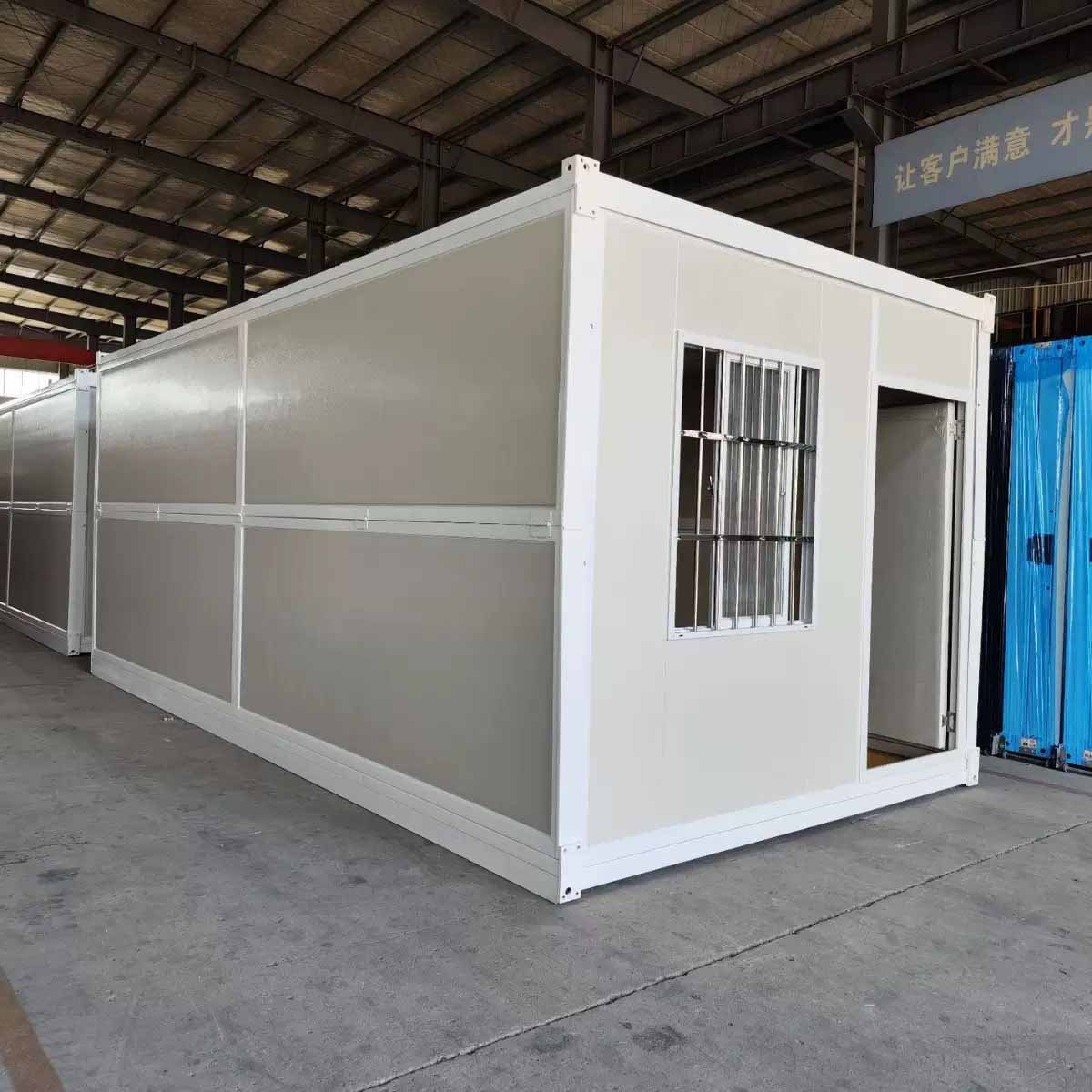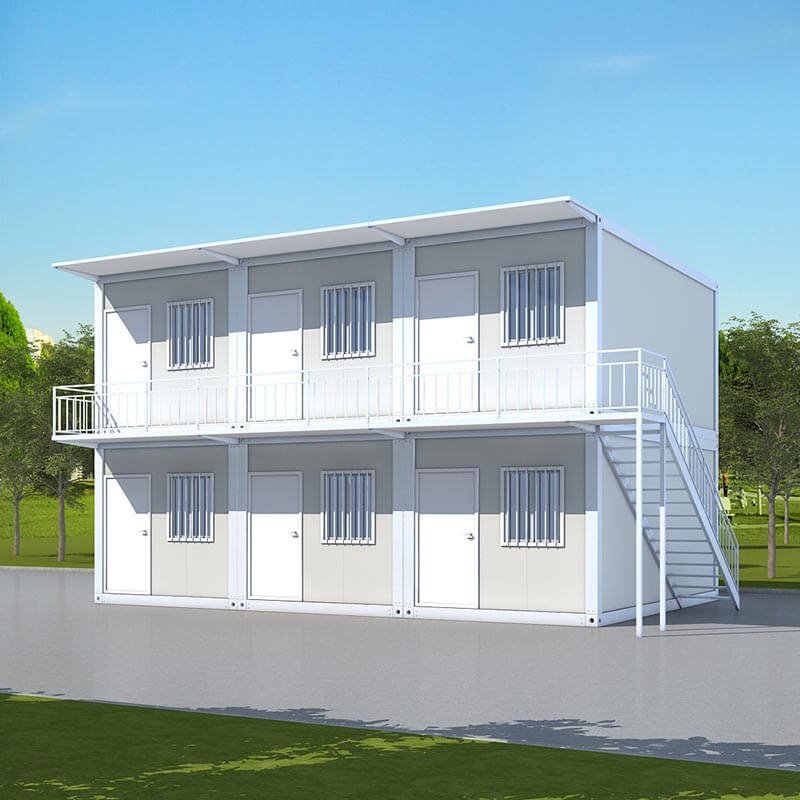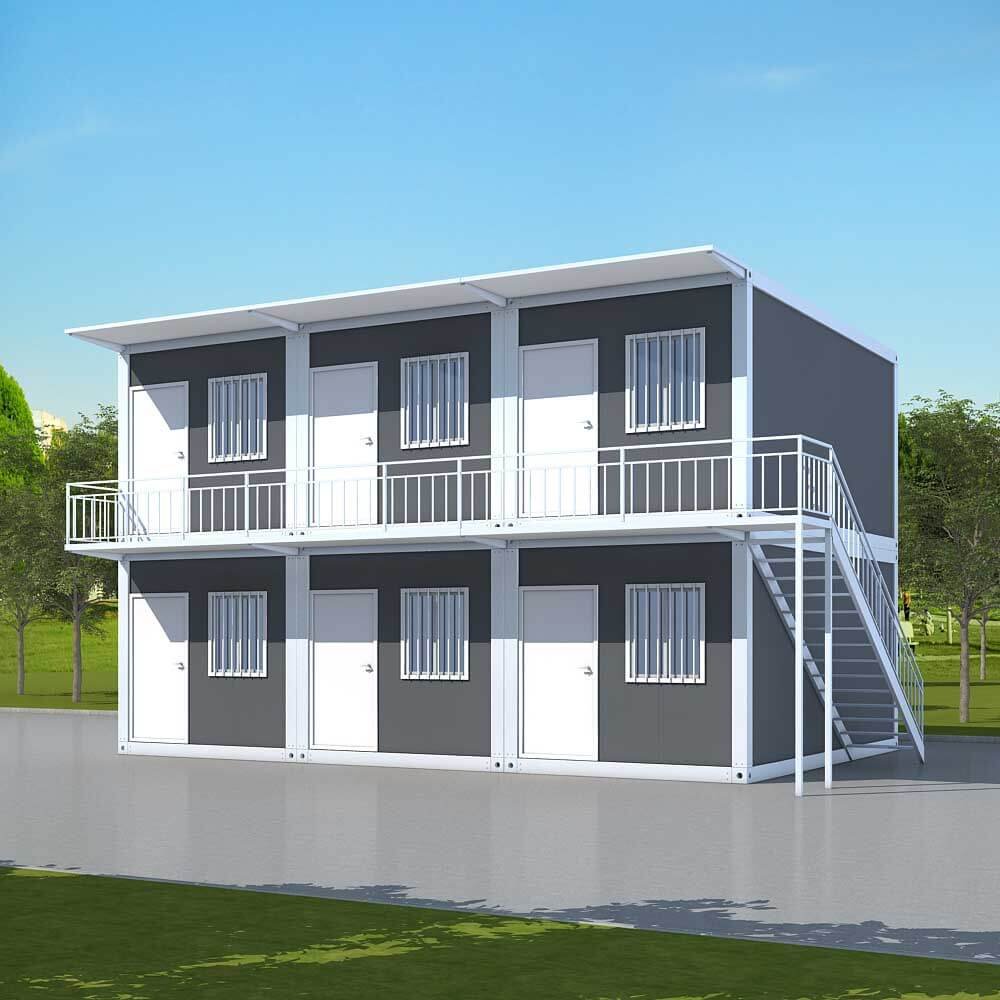Folding Container Houses: The Future of Flexible and Sustainable Living
In recent years, the housing industry has witnessed a remarkable innovation with the rise of folding container houses. These structures are revolutionizing the way we think about housing, offering a blend of flexibility, cost – effectiveness, and sustainability that is hard to match with traditional building methods.
What Are Folding Container Houses?
Design and Structure
Folding container houses are prefabricated units that are ingeniously designed to fold down for transportation and then be easily assembled on – site. They are typ
icaly based on modified shipping containers, which serve as the foundation for a sturdy and adaptable living space. The folding mechanism is a key feature, allowing for significant space optimization during transit. For example, a fully – equipped folding container house can be compacted into a fraction of its assembled size, making it highly transportable to even the most remote locations.
Materials Used
The main material used in constructing folding container houses is steel. Steel provides exceptional strength and durability, ensuring that the houses can withstand various weather conditions, from strong winds to heavy rainfall. Additionally, the steel framework can be easily modified and customized. Inside the houses, materials such as insulation, drywall, and high – quality finishes are used to create a comfortable and livable environment. Insulation helps in regulating the temperature, making the house energy – efficient, while drywall provides a smooth and aesthetically pleasing interior surface.
Benefits of Folding Container Houses
Portability and Flexibility
One of the most prominent advantages of folding container houses is their portability. They can be transported by trucks, trains, or even ships, making them an ideal choice for areas where access to traditional building materials is limited. This portability also extends to the flexibility of use. A folding container house can serve as a temporary residence, a mobile office, or even a pop – up store. For instance, construction companies can use them as on – site offices during a project, and then relocate them to another site once the project is completed.
Cost – Effective
Folding container houses offer a cost – effective housing solution. Since they are prefabricated, a significant amount of the construction work is done in a factory setting, which reduces labor costs associated with on – site construction. The use of shipping containers, which are often recycled or repurposed, also cuts down on the need for expensive raw materials. Moreover, the quick assembly time means that there are fewer days of construction, further saving on overall costs.
Sustainability
These houses are highly sustainable. By using shipping containers that would otherwise be discarded or left idle, folding container houses contribute to reducing waste. In addition, many folding container houses are designed with energy – efficient features. Solar panels can be installed on the roof to provide electricity, and rainwater harvesting systems can be incorporated to collect and reuse water. These features not only make the houses more environmentally friendly but also help in reducing utility bills for the occupants.
Durability
Built with high – grade steel, folding container houses are extremely durable. They can endure harsh weather conditions, including hurricanes, earthquakes, and heavy snowfall. The steel structure provides a stable and secure living environment, and with proper maintenance, these houses can last for many years.
The Construction Process of Folding Container Houses
Design and Planning
The construction process begins with a detailed design and planning phase. Architects and engineers work closely with the client to understand their specific needs and requirements. This includes determining the layout of the house, the number of rooms, and any special features such as a balcony or a skylight. The design also takes into account factors such as structural integrity, insulation, and ventilation to ensure a comfortable living space.
Fabrication
Once the design is finalized, the fabrication process starts in a factory. The shipping containers are cut, welded, and reinforced according to the design specifications. Windows and doors are installed, and the interior is pre – fitted with plumbing and electrical systems. Insulation is added to the walls and ceiling to improve energy efficiency. This factory – based fabrication process allows for a high level of quality control, ensuring that each folding container house meets strict standards.
Transportation and Assembly
After fabrication, the folding container house is transported to the desired location. Thanks to its foldable design, it can be shipped in a compact form, reducing transportation costs. Once on – site, the assembly process is relatively quick. A small team of workers can unfold and assemble the house in a matter of days. The pre – installed plumbing and electrical systems are then connected, and the house is ready for use.
Finishing Touches
The final step is adding the finishing touches. This includes painting the interior and exterior of the house, installing flooring, and adding interior fixtures such as light fixtures, cabinets, and furniture. These finishing touches not only enhance the aesthetic appeal of the house but also make it a comfortable and inviting living space.
Applications of Folding Container Houses
Permanent Residences
Folding container houses are increasingly being used as permanent residences. Their affordability and sustainability make them an attractive option for individuals and families looking for an alternative to traditional housing. With proper design and customization, these houses can be transformed into stylish and comfortable homes that meet all the needs of modern living.
Emergency Shelters
In disaster – stricken areas, folding container houses play a crucial role in providing emergency shelters. Their quick assembly time and durability make them ideal for providing immediate housing to those affected by natural disasters such as earthquakes, floods, or hurricanes. They can be quickly transported to the disaster area and set up as temporary shelters, medical facilities, or relief centers.
Remote Workspaces
With the growing trend of remote work, folding container houses are being converted into remote workspaces. These mobile offices can be set up in peaceful and scenic locations, away from the noise and distractions of the city. They offer a conducive work environment with the added benefit of being able to be relocated if the need arises.
Temporary Accommodation
For events such as music festivals, construction projects, or large – scale exhibitions, folding container houses can be used as temporary accommodation. They can be easily transported to the event site, set up, and then removed once the event is over. This makes them a practical and cost – effective solution for providing temporary housing for workers, performers, or visitors.
In conclusion, folding container houses represent a significant advancement in the housing industry. Their unique combination of portability, cost – effectiveness, sustainability, and durability makes them suitable for a wide range of applications. Whether you are looking for a permanent home, an emergency shelter, a remote workspace, or temporary accommodation, folding container houses offer a viable and innovative solution. As technology continues to improve and more people become aware of their benefits, we can expect to see these houses becoming an even more common sight in the future.


